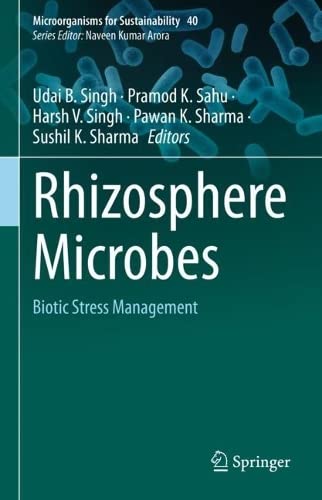

Most ebook files are in PDF format, so you can easily read them using various software such as Foxit Reader or directly on the Google Chrome browser.
Some ebook files are released by publishers in other formats such as .awz, .mobi, .epub, .fb2, etc. You may need to install specific software to read these formats on mobile/PC, such as Calibre.
Please read the tutorial at this link: https://ebookbell.com/faq
We offer FREE conversion to the popular formats you request; however, this may take some time. Therefore, right after payment, please email us, and we will try to provide the service as quickly as possible.
For some exceptional file formats or broken links (if any), please refrain from opening any disputes. Instead, email us first, and we will try to assist within a maximum of 6 hours.
EbookBell Team

0.0
0 reviewsThis edited book volume aims to bringing out a comprehensive collection of latest information and developments on the management of biotic stresses by the use of rhizospheric microbes across the globe. The main focus of this book is to address the scientific and practical significance of rhizosphere microbes in biotic stress management. The microbial communities in the rhizosphere ecosystem play multitude of microbe-microbe, microbe-insect/pest and plant-microbe interactions and they have not yet been fully exploited to gain benefits in this field as well as to achieve sustainability in agriculture. Among the more recent strategies, stress tolerance/resistance induced by environment-friendly elicitors of microbial origin and/or rhizosphere microorganisms has emerged as a promising supplement in the approaches to crop protection. The proposed book entitled "Rhizosphere Microbes: Biotic Stress Management” is pertinent to rhizospheric microbe-mediated biotic stress management covering all spheres of biotic stress tolerance viz., bio-resources, diversity, ecology, and functioning of microbial bio-control agents, host–parasite interaction, strategies to characterize microbial bioinoculants, interactions of rhizosphere microbes by developing a fundamental understanding of the microbial communities, exploration of the diverse roles of microbes and microbial communities and their role in biotic stress tolerance, microbe-mediated mitigation of biotic stresses, quorum sensing, microbial signalling and cross-talk in the rhizosphere, biofilm formation, cell-to-cell communication, role of microorganisms in ecosystems functioning under various biotic stress conditions, application of microbial bio-pesticides, molecular studies using microbial systems, etc. This book is of interest to teachers, researchers, crop protection scientists, capacity builders and policymakers. Also the book serves as additional reading material for under-graduate, post-graduate, and post-doctorate fellow of agriculture, forestry, ecology, life science, and environmental sciences. National and international agricultural scientists, policy makers will also find this to be a useful read.